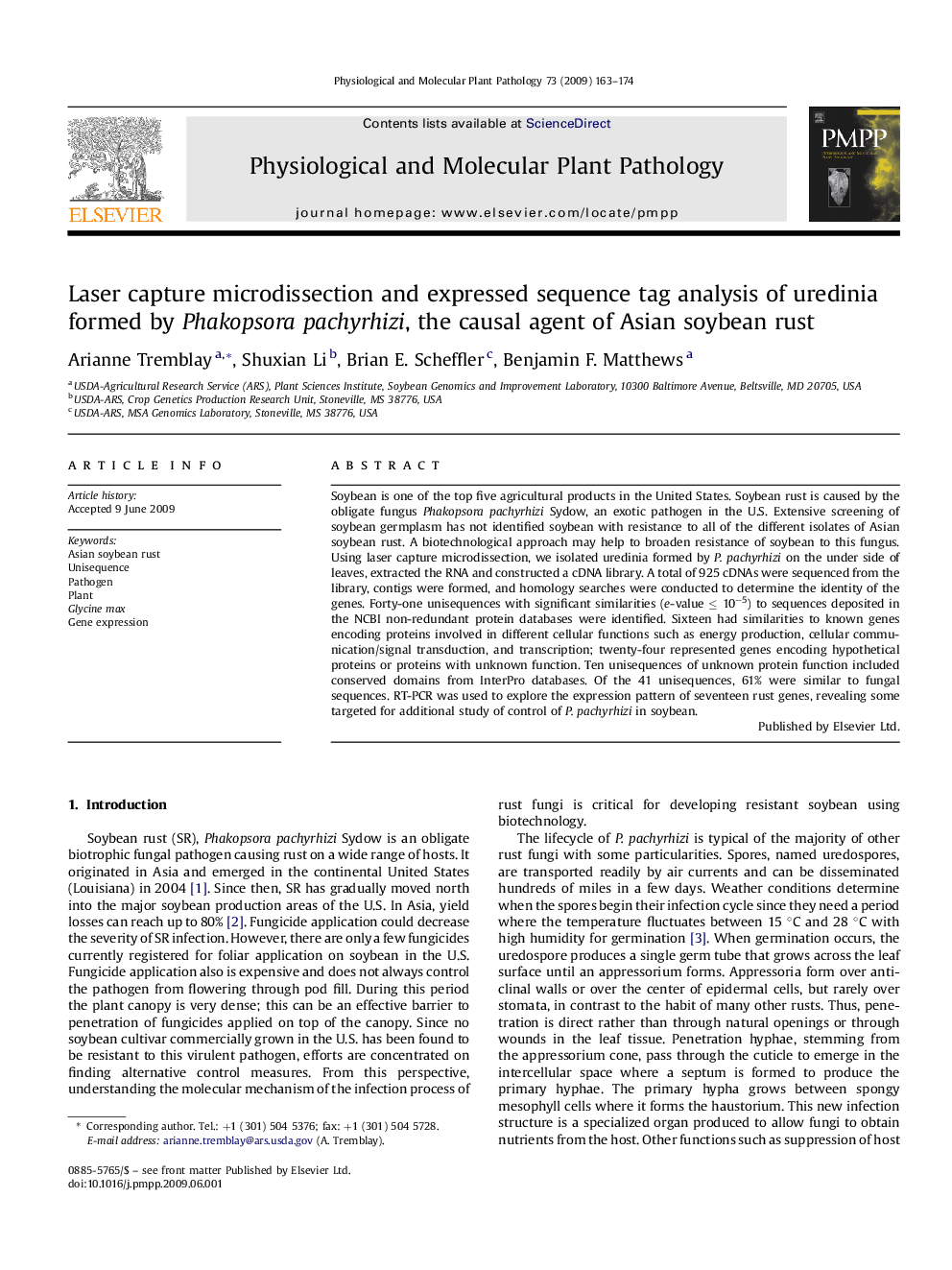| Article ID | Journal | Published Year | Pages | File Type |
|---|---|---|---|---|
| 2836557 | Physiological and Molecular Plant Pathology | 2008 | 12 Pages |
Soybean is one of the top five agricultural products in the United States. Soybean rust is caused by the obligate fungus Phakopsora pachyrhizi Sydow, an exotic pathogen in the U.S. Extensive screening of soybean germplasm has not identified soybean with resistance to all of the different isolates of Asian soybean rust. A biotechnological approach may help to broaden resistance of soybean to this fungus. Using laser capture microdissection, we isolated uredinia formed by P. pachyrhizi on the under side of leaves, extracted the RNA and constructed a cDNA library. A total of 925 cDNAs were sequenced from the library, contigs were formed, and homology searches were conducted to determine the identity of the genes. Forty-one unisequences with significant similarities (e-value ≤ 10−5) to sequences deposited in the NCBI non-redundant protein databases were identified. Sixteen had similarities to known genes encoding proteins involved in different cellular functions such as energy production, cellular communication/signal transduction, and transcription; twenty-four represented genes encoding hypothetical proteins or proteins with unknown function. Ten unisequences of unknown protein function included conserved domains from InterPro databases. Of the 41 unisequences, 61% were similar to fungal sequences. RT-PCR was used to explore the expression pattern of seventeen rust genes, revealing some targeted for additional study of control of P. pachyrhizi in soybean.
